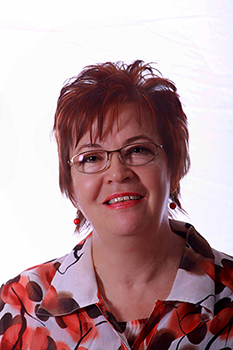National Human Trafficking Resource Line a victim-centred approach to combating crime

Prof Beatri Kruger, Adjunct Professor at the
UFS Faculty of Law. Photo: Supplied
As a response to the rising number of human trafficking cases in South Africa and around the world, key role players in various fields have pulled together to come up with workable solutions on how to stop the crime and assist victims. Some of the work being done by NGOs and law enforcement agencies has been supported by insights from research conducted in communities and by academic institutions. According to Prof Beatri Kruger, Adjunct Professor of Law in the Faculty of Law at the University of the Free State and experienced researcher in human trafficking, support for victims has grown in leaps and bounds with the help of the latest technology. More and better quality information can be collected to strengthen efforts of combating the crime,” she said.
One such technological development is the national Human Trafficking Resource Line, which provides various services, including information on trafficking activities, assistance to agencies working with victims of trafficking in persons (TIP), creating a network from which data can be collected, analysed, and activities tracked, in order to ensure the best service to victims.
The resource line connects callers, often victims of TIP or anonymous tippers, to service providers in social services, law enforcement, places of safety, medical facilities, and government agencies, especially during emergencies.
Resource line a helping hand to victims
The resource line was established in 2016 and has replaced the previous helpline. This line provides more services and resources than just a helpline. Through partnerships, it works to strengthen local and national structures that can assist victims over the phone.
Call specialists are trained by Polaris, an American company using international standards and protocols. The call specialists are available 24/7 to take reports of human trafficking confidentially and anonymously. They put victims in touch with service providers for health screening, counselling, and repatriation if they are from another country, and also assist with case management.
Empowering service providers is the key to success
Support for service providers such as NGOs, safe houses, and government departments in the network is in the form of skills training programmes for staff, and a referral system in various provinces around the country. There are good referral partners in each province, as well as provincial coordinators ensuring accountability regarding cases, mobilising services for victims, and coordinating the referrals and response.
To strengthen the network further, services provided in each province are being standardised to ensure that the right people are contacted when handling cases, and that key stakeholders in each province are used. The strength of the provincial provider network is key to offering victims of human trafficking the services they need.
Human trafficking is a crime that permeates multiple academic disciplines and professions. Therefore, information collected from victims through such a helpline and collated by agencies, will assist academic institutions such as the UFS in furthering their research, while strengthening the content of academic programmes in fields such as law, law enforcement, social sciences, health sciences, and international relations.
The number to call for reporting or providing tips on TIP-related crimes and activities, is 0800 222 777.